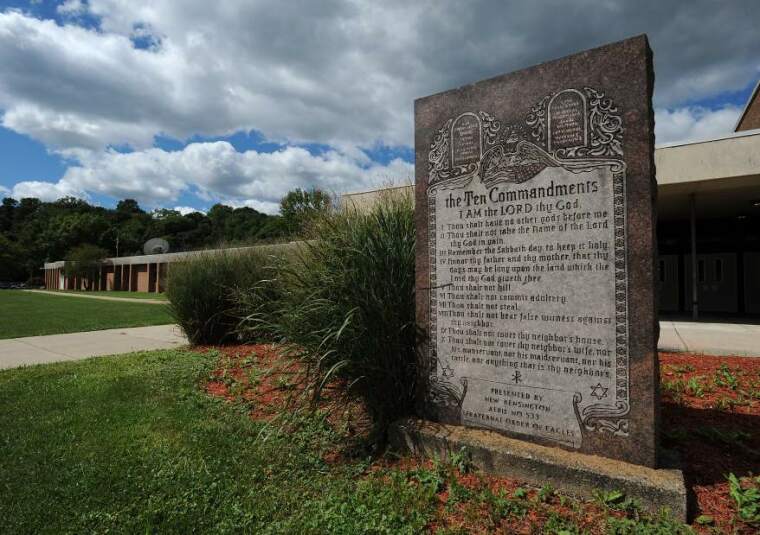Federal judge rules vintage 1957 Ten Commandments monument can stand tall outside high school

NEW KENSINGTON, Pa. (Christian Examiner) – A federal judge has dismissed a case brought against a Pennsylvania school district's display of the Ten Commandments outside of a New Kensington high school.
In the decision, U.S. District Judge Terrence McVerry wrote that the plaintiffs, Marie Schaub and her daughter, represented by the Freedom from Religion Froundation, "failed to establish that they were forced into 'direct, regular, and unwelcome contact' with the Ten Commandments monument on the grounds of Valley High School."
According to the Pittsburgh Tribune, McVerry wrote that the depositions offered by Schaub and her daughter revealed that both could only recount a few occasions where they had seen the monument, and in most cases they did not even pay attention to its presence. He also wrote, according to the paper, that the "offense" over the monument "seems to have manifested itself only after FFRF became involved in the dispute." The monument has been in place since 1957.
Because there was no "injury" to the woman or her daughter, the judge wrote, there was no need to discuss removal of the monument. In short, they had no standing because they were unaffected by its presence.
But the Wisconsin-based Freedom of Religion Foundation (FFRF) and Americans United for the Separation of Church and State (AU) disagreed after the ruling. In a statement after the judge's ruling, FFRF claimed the judge did not address the constitutional questions related to the monument.
Dan Barker, co-president of the group, said the Schaubs were, in fact, injured because the mother withdrew her child from the school after discovering the monument was there. "Thus, the plaintiffs' standing should be even more apparent since they altered their conduct to avoid the school," Barker said.
"It is troubling that judges are closing the courthouse door on plaintiffs who simply want government actors to abide by the Constitution," Barker added. FFRF had asked for the monument's removal in 2012, and when the school district refused, it filed a lawsuit.
AU claimed in its statement the judge was ignorant of the law and focused on the wrong facts in the case. The offense of the plaintiffs, the group said, was not the issue. According to AU, "the reality is that the Decalogue is unconstitutional because it gives the impression that government is endorsing belief over non-belief. Whether or not anyone is offended by the specific display is secondary."
The age of the monument likely played a key role in McVerry's ruling. While the courts generally frown on new monuments, those erected decades ago are generally perceived as historical landmarks and oftentimes allowed to remain. In 2005, in Van Orden v. Perry, the Supreme ruled a Ten Commandments monument erected on the grounds of the Texas State Capitol could remain since it had been there, without controversy, since 1961.
AU said the age of the monument is irrelevant.
"An unconstitutional government endorsement of religion is so whether or not it has been going on for 50 years or 50 hours, and the idea that age somehow changes the meaning of the Ten Commandments is baseless," AU said in its statement.
John Pallone, superintendent of the Kensington-Arnold School District, said he was pleased with the ruling but anticipated a future appeal. He said he hoped, however, that the case was over so the district could "move on with the mission of educating children."